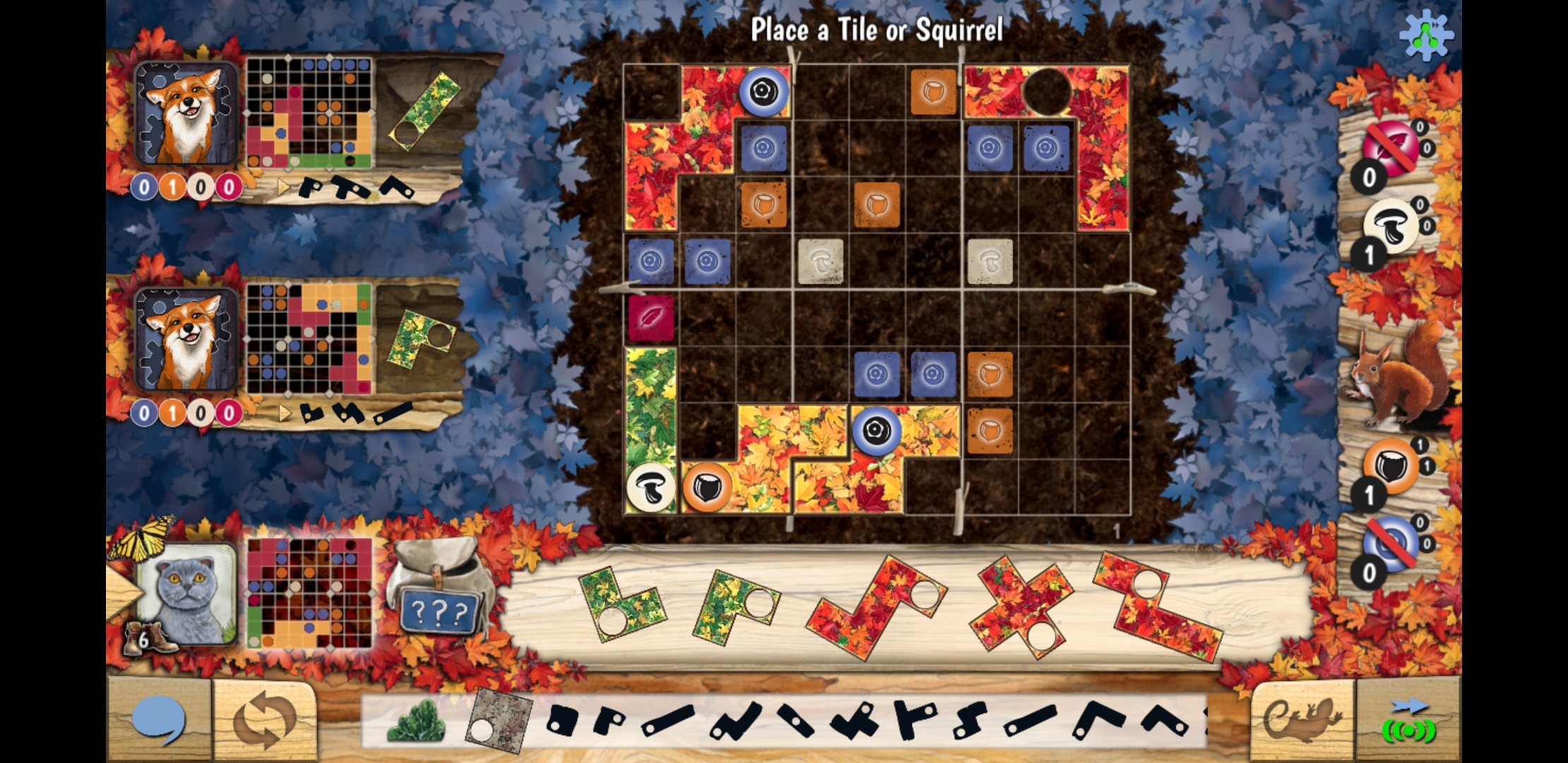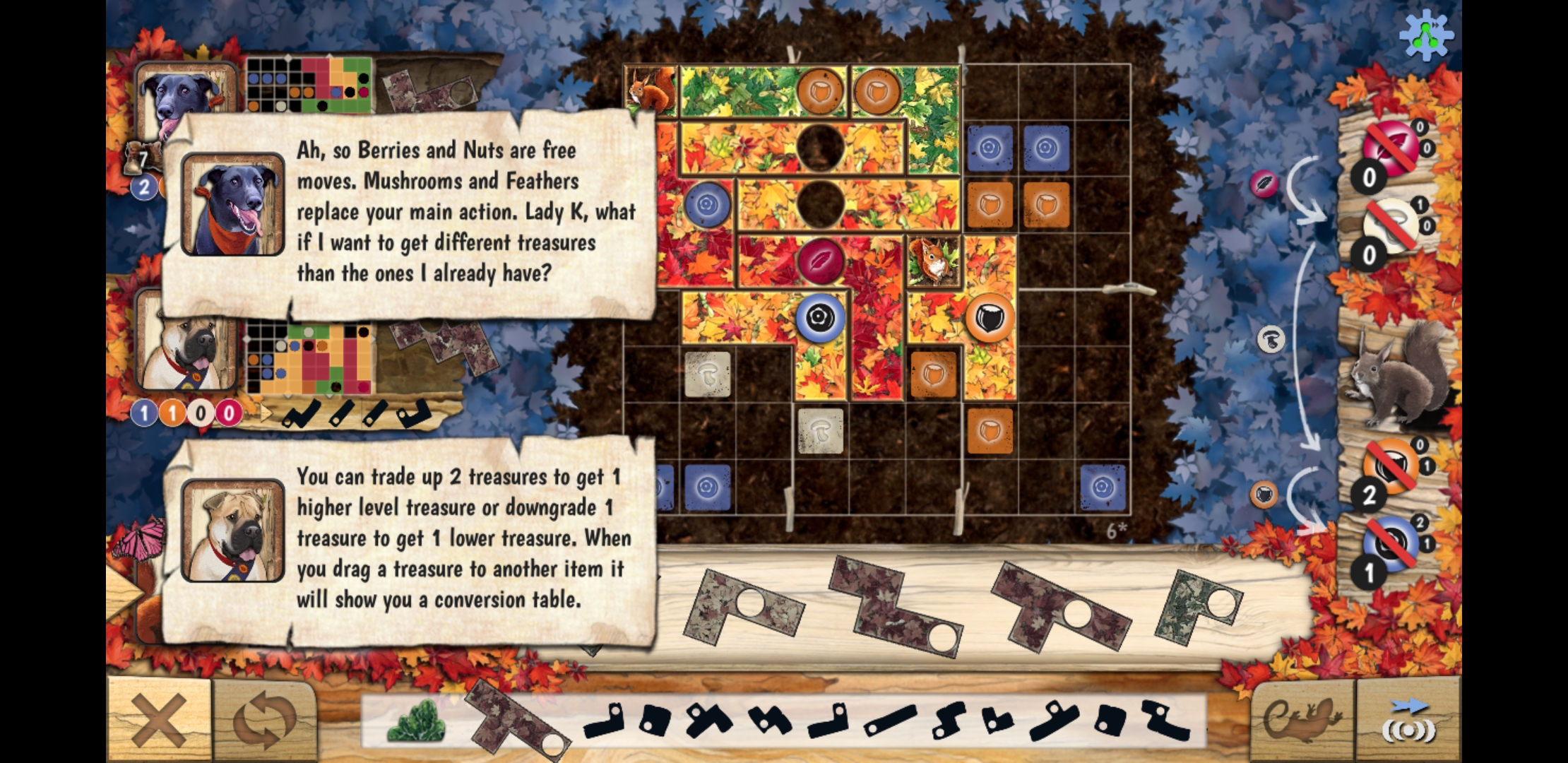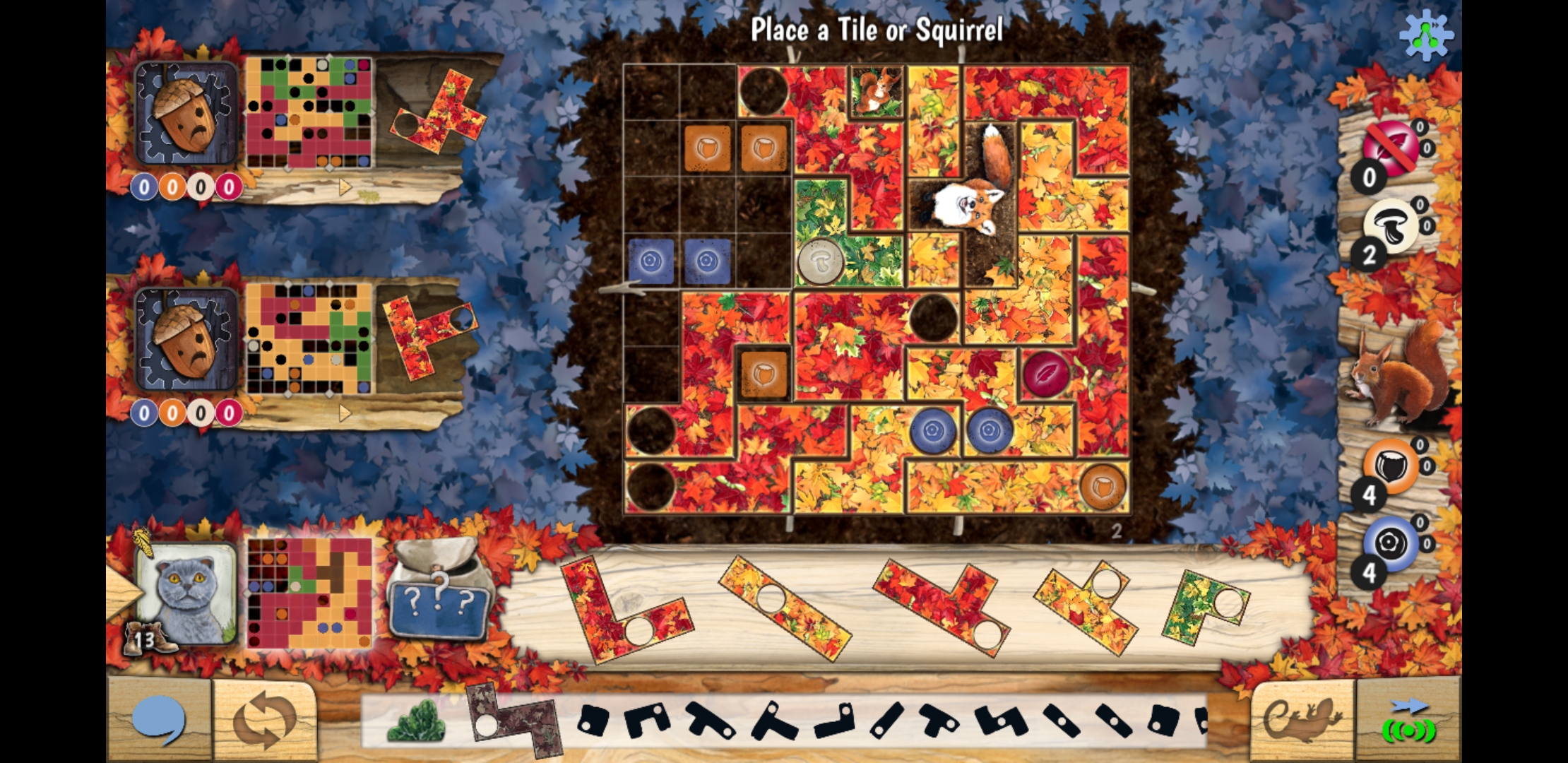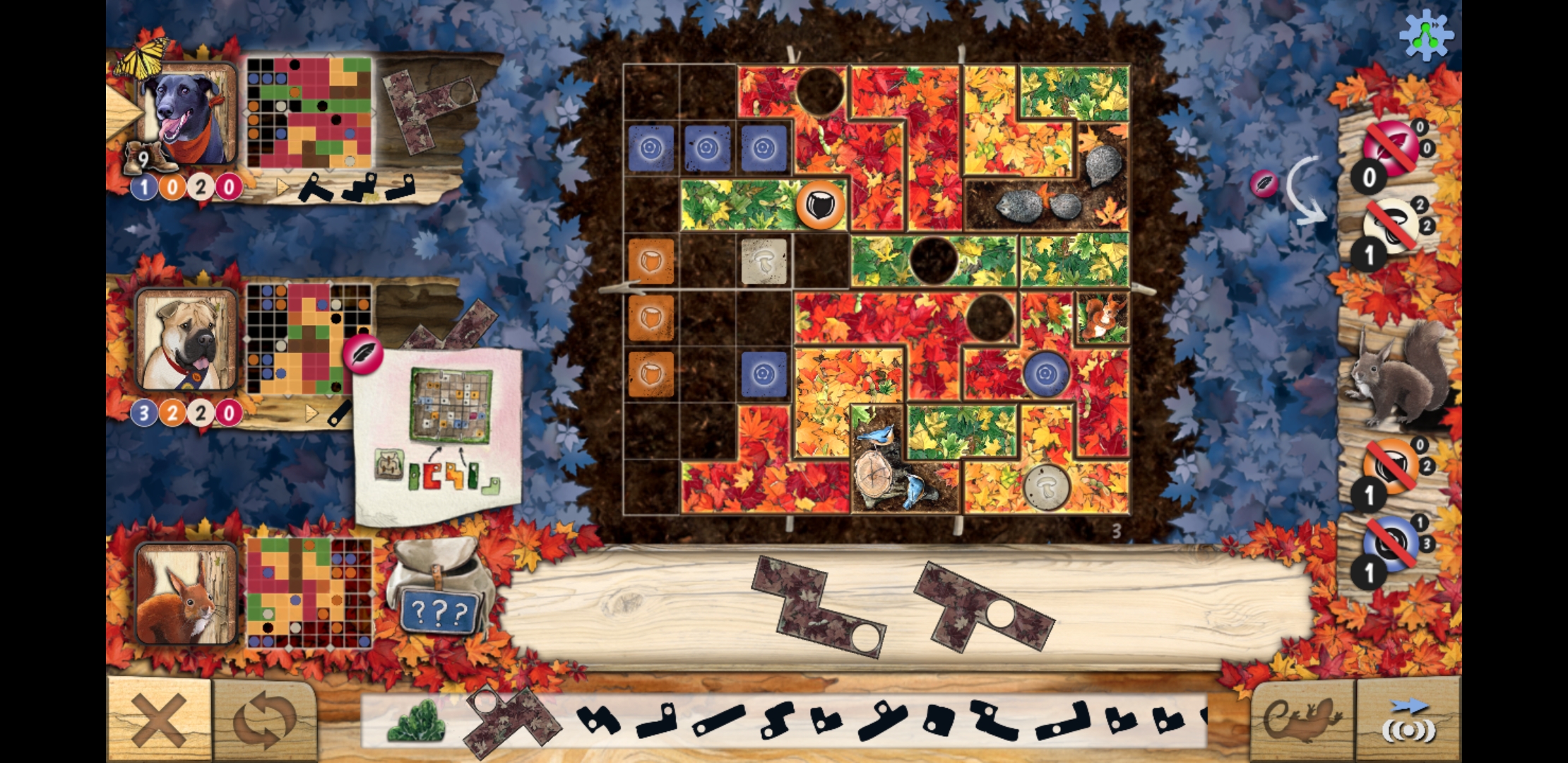![]() As interest in board games continues to rise, so too does the interest in exploring new ways of playing those games. One such way is through digital ‘ports’ of those games – translating them PCs, consoles, phones, and tablets.
As interest in board games continues to rise, so too does the interest in exploring new ways of playing those games. One such way is through digital ‘ports’ of those games – translating them PCs, consoles, phones, and tablets.
While digital versions may not exactly replace the feeling of a physical board game, many add subtle tweaks that such as for solo play, campaign modes, online competition, or simply as a more portable way to enjoy the game. This is new territory to explore. Welcome, to the Pixel Provinces.
![]()
With its release as the second installment in Uwe Rosenberg’s puzzle trilogy, Indian Summer had fans clamoring for the next piece of the puzzle. How will its digital adaptation do as another extension of this well-received trilogy?
The Game
Indian Summer was released in 2017 as the second game in Uwe Rosenberg’s ‘puzzle trilogy’ following Cottage Garden, and the influence of his previous puzzle games certainly shows through.
Indian Summer takes the natural setting of Cottage Garden and moves its focus to the forest floor, which is now covered in swaths of orange and red leaves with the coming of fall. You are tasked with being the first to cover your forest floor entirely with leaves that come in the form of puzzle tiles of all different shapes.

Placing a tile’s hole over berries, nuts, mushrooms, or feathers will give you bonus actions to use in later rounds
This race is made even more competitive by holes left in the game’s tiles that can be lined up over berries, nuts, mushrooms, and feathers on the player boards to give you bonuses when collected. Mushrooms and feathers allow you to place tiles faster while berries and nuts refill your tile options and let you place squirrels to fill in gaps, respectively. The player who best uses these bonuses to their advantage and fills in their board the fastest wins.
Tutorial
You’re introduced to Indian Summer’s tutorial by two playful dogs, whose lighthearted energy and squirrel jokes lend a liveliness that will help carry you through the tutorial. The tutorial is broken up into three sections that focus on the core elements of the game: tile placement, forest treasures, and animals. The pacing of each section is quick, and, when coupled with the ability to play through rounds of the game with assistance versus being given a basic description of the rules as is common in many other game tutorials, being are able to pick up the nuances of this game for newer players becomes a breeze.

Forest treasures are given special attention in the tutorial as they’re a crucial aspect of the game’s tile placement strategy
Each section of the tutorial may also be revisited on its own, which is helpful for those who may have a harder time grasping the handful of more difficult concepts of the game like capitalizing on forest treasures. While the tile placement aspect of Indian Summer is not particularly challenging to grasp for those who have played the physical game, going through this section is a must for those who are unfamiliar with the drag-and-drop tile placement system present in both this and Cottage Garden’s digital port. The game also includes a PDF copy of the rules for those that want to read through them more closely.
Gameplay Features
While each game ideally wishes to stand on its own, like their physical counterparts, it’s almost inescapable how much Indian Summer’s digital port is influenced by its predecessor, Cottage Garden. Indian Summer borrows heavily from it. The upshot is that this makes its gameplay system familiar to those that have played the first installment of the series.
The game comes with both synchronous and asynchronous play options in the form of local / AI and online play modes. The pass-and-play option for local games allows you to add any combination of local friends and AI opponents up to the max player count of four. AI in Indian Summer comes in three levels – easy, medium, and hard – and selecting them for your game is a simple way to increase the challenge level. The medium AI is great for adding a bit of spice to a game, and the hard AI can be formidable even for experienced players. The easy AI is meant for those that are unfamiliar or relatively inexperienced with Indian Summer, however, and will not prove difficult to beat once you’ve played the game a few times. Luckily, in all cases the AI levels are paired with a settings option to speed up their turns, which is essential, as their default play speed is slow and can quickly prolong a game.

Playing against AI players is a great way to get in a quick game without dealing with asynchronous online games
The online option has two types of online games: ranked and fast. Ranked games are asynchronous and are played out over a longer period, with each one affecting your rank and online stats. This is the primary focus of the online game option. Yet while you’re waiting in the queue to be paired with an online game, you’re also given the option of playing a fast game. As the name suggests, these games are quicker and are meant to be played in the time you’re waiting to get matched with a longer online game. At present you won’t have to wait long, however, as the online lobby is frequently occupied, making it fairly effortless to jump into a game. For those who enjoy achievement systems, Indian Summer has that covered too: the online mode allows you to collect achievements based on your online actions, such as winning against a higher ranked player or collecting a certain number of nuts and feathers.
Functionality
Indian Summer’s port is well functioning and operates with no visible issues. The menus upon loading the game are easy to navigate and well laid out while the process of starting online and local games is concise and straightforward. The graphical framework beautifully reflects the physical game’s stunning colors and artwork, and the visuals are accompanied by charming music and the calming sounds of forest birds.
The drag-and-drop tile system will take some slight getting used to for players accustomed to easily manipulating the physical game’s tiles, but after some practice and adjustment the process becomes second nature. For the first few games where you’re getting used to the controls, though, the available Undo button included at the bottom of the screen will be abundantly useful.
The most outward change in this version of Indian Summer is the much-condensed layout of the game into something much more manageable in a portable format. In a physical game of, the table would normally be covered with the characteristic green, orange, and red tiles of autumn foliage, but this adaptation condenses that layout to a strip of personal tile options and a small scrolling bar of the remaining shared tiles. Condensing these tiles to a small portion of the screen and silhouetting them allows you to focus more on your current options and placement while still allowing you the chance to plan for future rounds. The berry, nut, mushroom, and feather tokens have also been condensed to a small counter on the side of the screen, which can be accessed through a drag-and-drop system like that of the tiles. Minimizing these smaller aspects of the game allow a greater focus on its core tile placement element, which aids in aligning the digital player experience with the physical player experience. Doing so makes this digital adaptation feel even closer to the physical game. It does diminish some of the game’s table ambiance slightly, but the app compensates for this without detracting from the actual gameplay at all.
Verdict
Taking a cue from its series predecessor, Indian Summer’s digital port is another fine installment in the digital adaptations of Uwe Rosenberg’s puzzle series. This unencumbered adaptation retains the core, seasonal essence of the physical game while reducing clutter and speeding up the ease of which to play it. The game’s tutorial is well paced and thorough, while the gameplay options offer numerous ways to customize your playthroughs both locally and online. The core drag-and drop-system is easy to use, and the combination of the game’s streamline layout and beautiful screen presence help make the game as pretty as it is functional. When you take all of these disparate parts together in colorful totality, it’s hard to say anything other than that Indian Summer is a well-executed and highly enjoyable port of an already great game.
Indian Summer is available on these platforms:
![]()
Sara Perry is a contributing writer and aspiring game designer with a love for games both physical and digital. Also cats. She can be best reached via Twitter.
Feel free to share your thoughts with us over on our social media pages!




